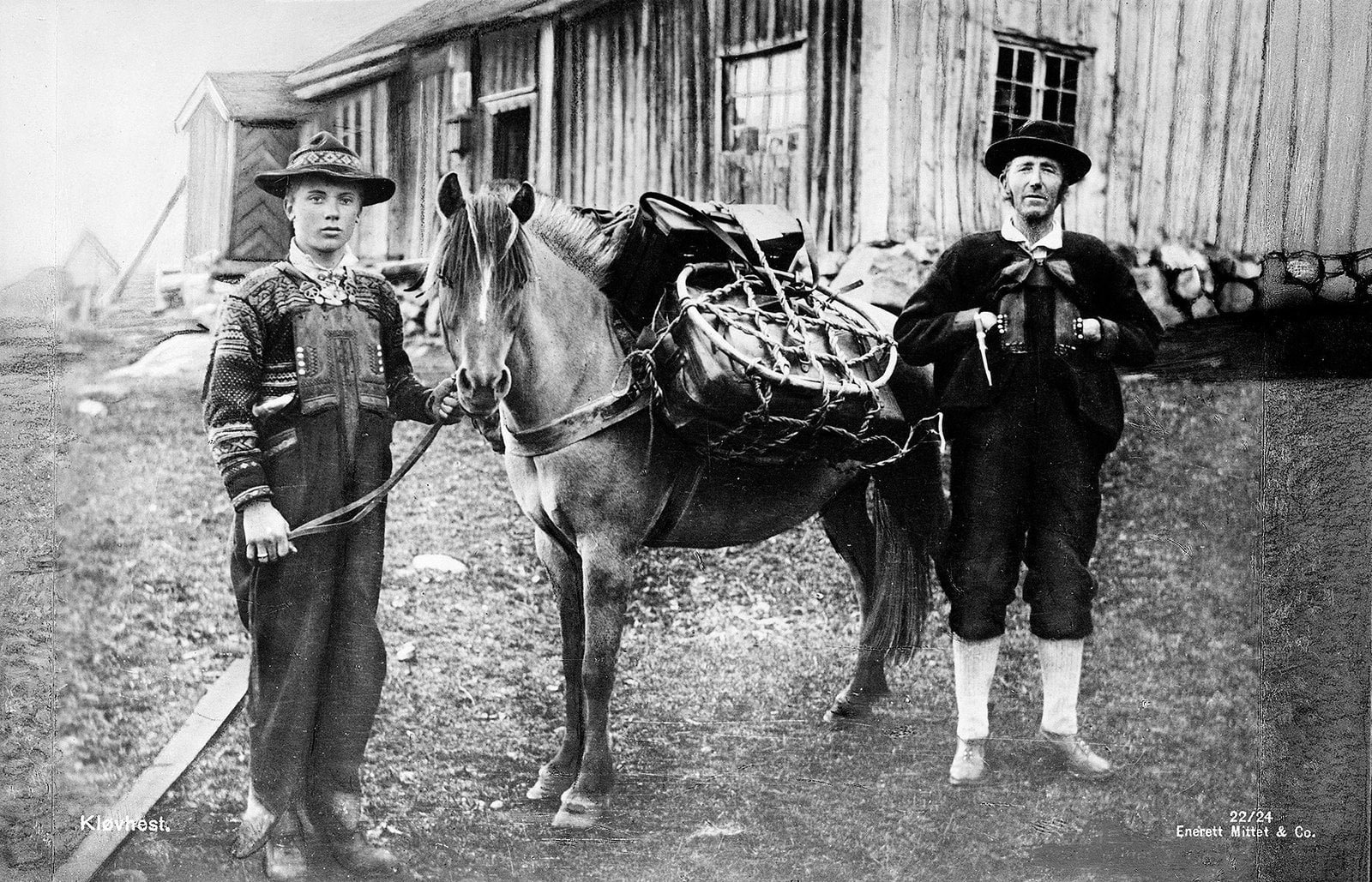A happy cow gives the best milk
Traditionally, the women looked after most of the domestic animals on the old Norwegian farm.
The milkmaids of yesteryear took immense pride in getting the most and best milk out of their dairy animals. High-quality milk meant high-quality food on the table.
Giving the domestic animals a calm and stable environment is essential, and nutritious food and plenty of water equally so.
The animals and their abodes must be clean and dry, as harmful bacteria can ruin the milk. Beware not to bring disease from one cow to the next.
Mimicking the calf’s suckling
When the calf suckles its mother, it gives the udder gentle thrusts. This stimulates the milk production and helps the milk run down into the teat. The calf then sucks the milk out, using its tongue and palate. The milkmaid mimics this suckling process when milking.
Four chambers
The cow’s udder has four chambers, one for each teat. First, you milk the two at the front, then the pair at the back.
But from which side of the cow?
According to Aslaug Engnæs, you milk the cow from the right – simply because you always use your strongest arm on the teat farthest away from where you are sitting. This means that for a right-handed person, sitting on the right-hand side of the cow is the usual choice. But to follow her logic: a left-handed milkmaid should sit on the left.
The cow herself has no preference. For her, the key elements are kindness, regularity, and the fact that the milkmaid knows what she is doing; twice a day – every day of the week – 365 days a year.
How to milk
You start by cleaning the udder with a cloth wrung out in warm water. This also simulates the calf’s natural initial licking – and sends signals to the cow’s brain. Hormones will stimulate the milk production, allowing the milk to run down into the teat.
Always have clean and dry hands, again to avoid bad bacteria.
Next, you place your hands around the teats – and give the udder some gentle thrusts. Then you squeeze the top part of the teat with your thumb and index finger – without squeezing too hard – before adding pressure with the remaining fingers – one by one – to drive the milk out. Do not pull the teats downwards. – You repeat the process in rapid succession. It is important not to create any discomfort for the cow.
Note that if you press the teat with all fingers at the same time, you may end up pushing the milk back up into the udder rather than out. This is bad and could lead to various illnesses for the cow. To keep the udder productive and healthy, it is important to empty all chambers thoroughly – following the correct procedure.
After milking both the front and back chambers, you go over both the front and rear teats one more time to complete the main milking stage.
Even now, there will still be some milk left in the udder. This is often the fattest milk. Gently massage the back chambers from the top and down. Repeat a few times before milking the two rear teats as described above. Then do the same with the front.
So now we know
According to the logic of Aslaug Engnæs, there is no right or wrong side from which you milk a cow. It is the strength of one’s hands that decides. But who knows, some of you seasoned milkers out there may beg to differ.
A shout-out to Olava Sandaker
In 2013, Trygve Sandaker (1918-2014) gave a shout-out to his mother, Olava Sandaker (1894-1952): «My mother was the fastest milker I ever saw. And a great keeper of all the animals on the farm. She was simply the best mother in the whole, wide world».
Source: Engnæs, Aslaug. Melkestell på småbruket: praktisk veiledning. AS Vestlandsk Næringsliv 1935. | EGP.00094











